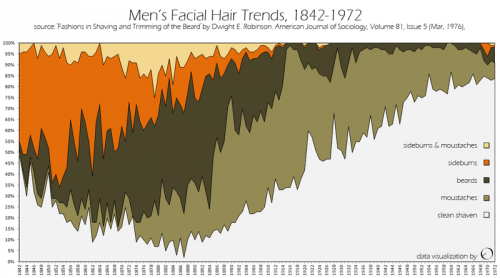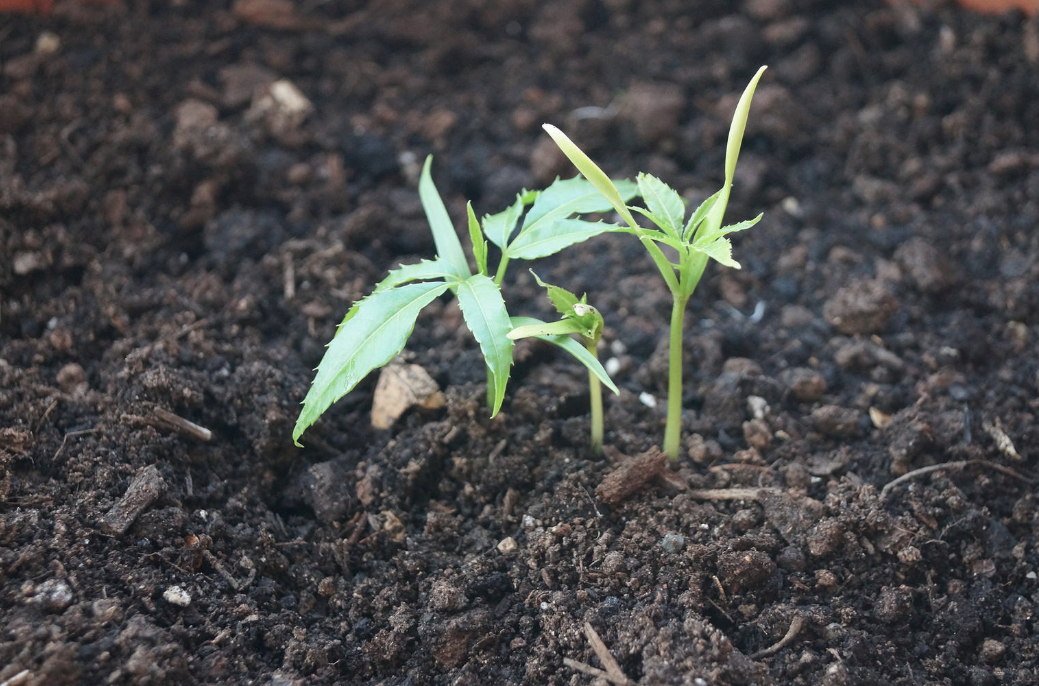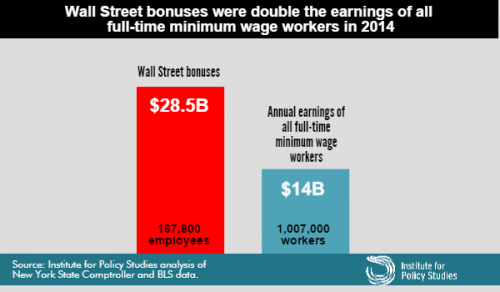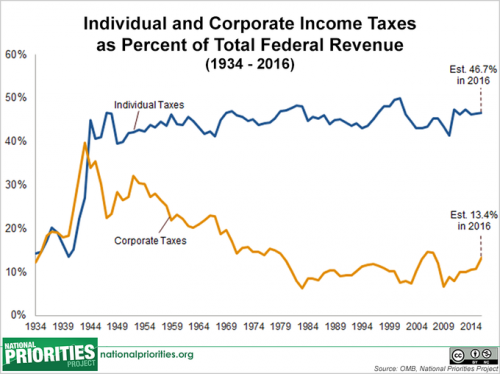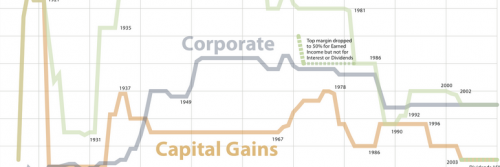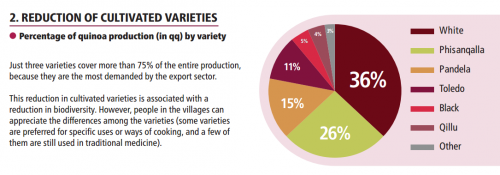At Vox, Phil Edwards dug up and revived an article from the American Journal of Sociology published in 1976. It tracks facial hair trends — or what the author whimsically calls “frequencies in whisker forms” — from 1842 to 1972. He notes, in particular, the overwhelming dominance of the clean face at the time of publication.
This is your image of the week:
The original author uses the data to make an argument about the existence of fashion trends. He’s interested, too, in why fashions change and, in like any good sociologist, recommends further research. He does speculate, though, about one possible driver of change: old people. He writes:
…as long as any considerable number of people who have stuck to a superseded form of personal appearance are still living, the young may tend to avoid such a mode as old hat. These distasteful associations seem to be safely overcome only after the passage of a century or more.
His theory holds. If his data is correct, beards disappeared right around 1915. It’s been a hundred years and beards are back!
Lisa Wade, PhD is an Associate Professor at Tulane University. She is the author of American Hookup, a book about college sexual culture; a textbook about gender; and a forthcoming introductory text: Terrible Magnificent Sociology. You can follow her on Twitter and Instagram.
